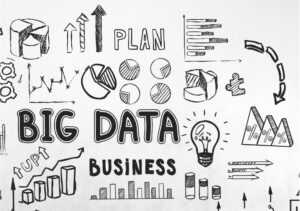Marketing Buzz-Buzz.
We marketers love our buzzwords. From “data-driven marketing” to “personalization-at-scale,” we have a million of them, and they sometimes over-simplify complex practices to the point where many marketers feel overwhelmed. However, they don’t need to.
Let’s take “data-driven” for example. It’s pretty straightforward. The data is certainly what drives the marketing strategy, but in a world of Big Data, activating that data in a seamless fashion to the benefit of both customer and brand can be challenging.
The State of Modern Marketing.
 The principles of marketing haven’t changed for decades. Today’s marketing foundations are the same as yesterday’s. Marketers have always sought to better understand market trends and how they could best meet the needs of the customer. What’s changed are not the principles but the amount of information we have at our fingertips and the means by which we collect and process that data.
The principles of marketing haven’t changed for decades. Today’s marketing foundations are the same as yesterday’s. Marketers have always sought to better understand market trends and how they could best meet the needs of the customer. What’s changed are not the principles but the amount of information we have at our fingertips and the means by which we collect and process that data.
In a recent article, Forbes makes some interesting predictions for 2023. They state consumer data management and infrastructure will be a priority investment for CMOs. I certainly hope so, because I see so many brands piecing together the Mar-Tech-Stack in an effort to deliver more personalized experiences. While having a CDP at the center of the stack would be ideal for most marketers, sometimes corporate budgets simply aren’t there to support the expensive price tag. However, that doesn’t mean we toss out the principles and stop trying to align strategy, data, technology and content.
Data-driven Gap-Strategies for a Cash-Challenged Economy.
“Think BIG. Start small. Learn fast.” It’s the mantra that’s been at the core of my career for decades, and it’s the foundation of some of my best gap strategies. If you don’t have a gap strategy, I suggest you develop one as you wait for that bigger marketing budget to come your way. You probably have more resources than you think. You just may not be utilizing them to their full capacity.
To develop a smart gap strategy, start by mapping out the big picture. Visualize the ideal solution and then reverse engineer it to discover the steps in-between your desired Valhalla and your every-day Denmark (i.e. where you may be right now).
- Review where you’re at. Is your data structured, clean and easy to update? Do you have a decisioning platform for activating the data? No? Revisit your marketing automation platform to see what capabilities you may not be tapping into. Are you utilizing all of your available tools to validate and manage data – or is there still something you need to configure to assist in that effort? What internal resources do you have to support data and tech alignment? In other words, how well do marketing, business analytics and IT get along? What can you do to nurture those key relationships?
- Identify data segments to test. Analyze and define key audiences. Is there an audience that’s under utilized? Is there potential to test key elements? If so, develop a testing protocol or “proof of concept.” Use cohorts and controls to slice the data for further testing, and then identify key learnings.
- Use the learnings to optimize. Lookalike audiences can be incredibly valuable in scaling up. Identify key campaigns and/or journeys you can fully test your audience segmentation in a live setting. Think like “the machine.” How can you utilize the data in a more sophisticated way, like a CDP?
- Chart your evolution strategy. Finally, roadmap your key next steps in evolving your marketing strategy towards a more robust solution. Once you’re ready for a more sophisticated data tool, you will have done the work necessary to support a seamless integration.
Want to learn more about data driven marketing? Check out The Protocols of Test and Learn.

